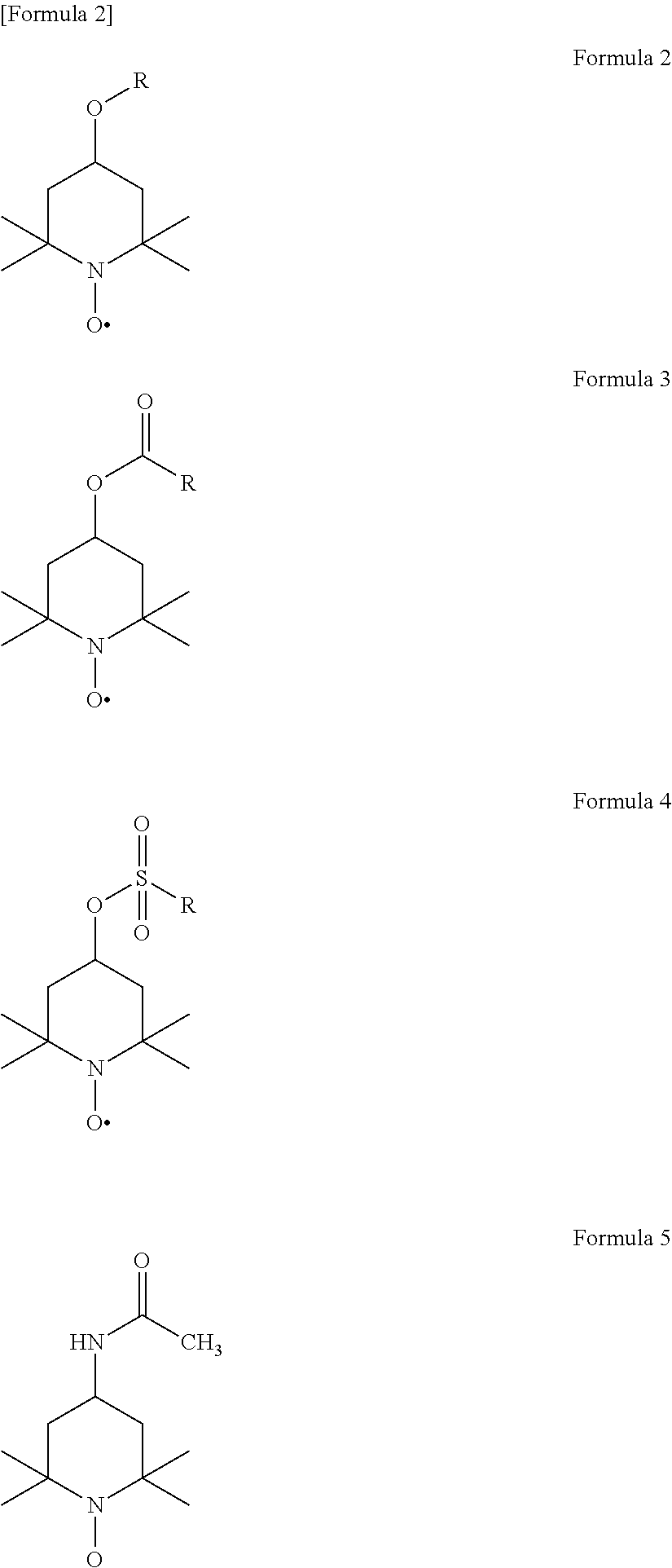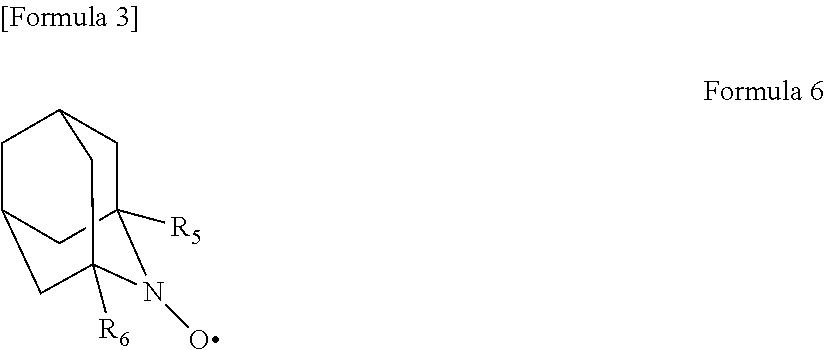Method for producing cellulose nanofibers
- Summary
- Abstract
- Description
- Claims
- Application Information
AI Technical Summary
Benefits of technology
Problems solved by technology
Method used
Image
Examples
example 1
[0093]Step C-1: 20 g (bone dry weight) of unbeaten bleached softwood kraft pulp (brightness: 85%) was added into an aqueous sodium hydroxide solution having a hydroxide ion concentration of 2.5 mol / L so that the pulp concentration was adjusted to 10 mass %. The mixture was stirred at room temperature (20° C.) for 1 hour and then neutralized with an acid and washed with water.
[0094]Step A: 5 g (bone dry weight) of the pulp treated with alkali in the step C-1 mentioned above was added to 500 ml of an aqueous solution in which 94 mg (0.5 nmol) of TEMPO (Sigma Aldrich) and 755 mg (5 mmol) of sodium bromide were dissolved, and the mixture was stirred until the pulp was evenly dispersed. To the reaction mixture was added 18 ml of an aqueous sodium hypochlorite solution (effective chlorine: 5%), and then the pH was adjusted to 10.3 with a 0.5 N aqueous hydrochloric acid solution and oxidation reaction was initiated. While the pH of the reaction mixture decreased during the reaction, a 0.5 ...
example 2
[0098]An aqueous dispersion of cellulose nanofibers was obtained and evaluated, in the same manner as in Example 1 except that the cellulosic starting material was changed to hardwood kraft pulp (brightness: 85%). The result is shown in Table 1.
example 3
[0099]An aqueous dispersion of cellulose nanofibers was obtained and evaluated, in the same manner as in Example 1 except that the cellulosic starting material was changed to softwood sulfite pulp (brightness: 85%). The result is shown in Table 1.
PUM
| Property | Measurement | Unit |
|---|---|---|
| Temperature | aaaaa | aaaaa |
| Fraction | aaaaa | aaaaa |
| Dissociation constant | aaaaa | aaaaa |
Abstract
Description
Claims
Application Information
 Login to View More
Login to View More - R&D
- Intellectual Property
- Life Sciences
- Materials
- Tech Scout
- Unparalleled Data Quality
- Higher Quality Content
- 60% Fewer Hallucinations
Browse by: Latest US Patents, China's latest patents, Technical Efficacy Thesaurus, Application Domain, Technology Topic, Popular Technical Reports.
© 2025 PatSnap. All rights reserved.Legal|Privacy policy|Modern Slavery Act Transparency Statement|Sitemap|About US| Contact US: help@patsnap.com



